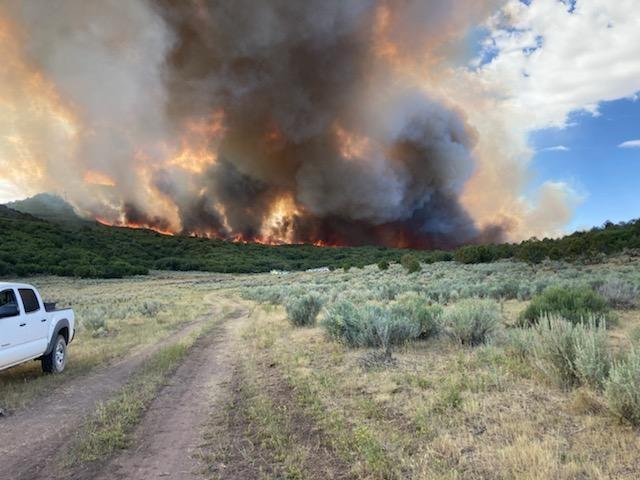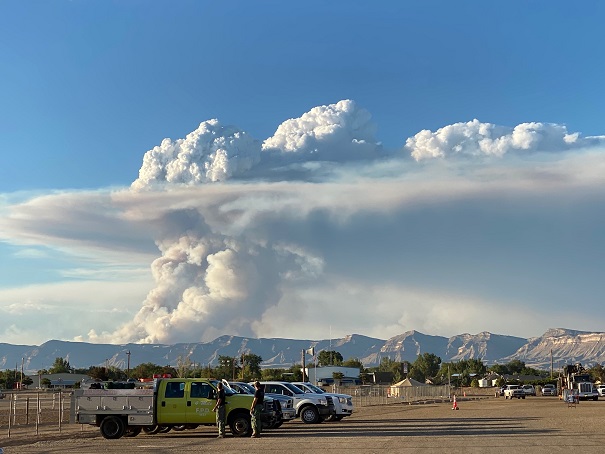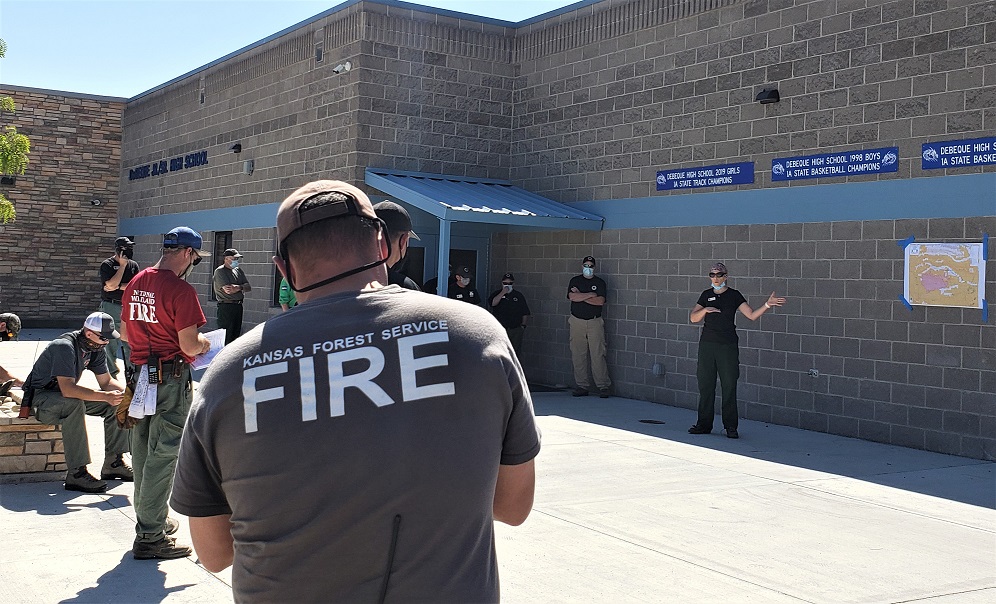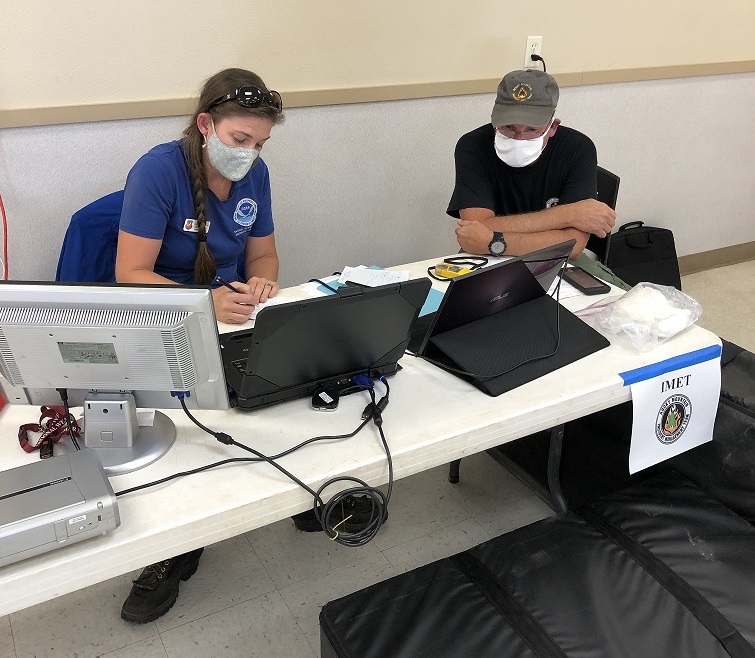
Excessive heat returns for portions of the Plains today where heat indices will likely climb above the century mark. Furthermore, warm temperatures, strong winds and dry fuels may result in rapid spread of wild fires across the western High Plains today. For the east coast, lingering storm with onshore flow will bring high surf, dangerous rip currents and coastal flooding, especially at high tide. Read More >
The call came Monday afternoon. NOAA/National Weather Service Boulder Meteorologist Lisa Kriederman was to report to the Pine Gulch Fire near Grand Junction the next day to begin specialized forecasts in support of firefighting activities. The fire had grown to over 5,000 acres and a Type II Incident Management Team (IMT), had been ordered. Rocky Mountain Incident Management Team Black took over management of the firefighting operations, and they would need onsite weather support. Kriederman, a veteran National Weather Service Incident Meteorologist (IMET), assembled her gear and was on site the next afternoon for a deployment that could last as long as two weeks. Staff at the Forecast Office would fill in for her operational shifts.


The Pine Gulch Fire on August 3 (left) and August 10 (right)
The National Weather Service Fire Weather program has a long history, with the Weather Bureau in Portland, OR issuing the first Red Flag Warning in 1913. Since that time the program has grown to include daily fire weather forecasts from NWS offices, Spot Forecasts for wildfires, prescribed burns, and Search & Rescue, and the IMET program.
The IMET program reliles on NWS forecasters who volunteer for the position. They undergo a rigorous training program to not only forecast at the detailed level needed, but also to interact within the Incident Command System. Conditions on deployment can be quite rugged, living in tents in fire camps, with 12 hour workdays or even longer. Extended time away from family creates a hardship for IMETS; Lisa and her husband have two preschool age daughters. This year, COVID-19 complicates the process. Social distancing and CDC guidelines are followed to protect all in the fire camp.

NWS Incident Meteorologist Lisa Kriederman briefs fire crews on the Pine Gulch Fire
As the IMET for the Pine Gulch Fire, Lisa works closely with the Fire Behavior Analyst in order to predict the fire’s behavior. While the safety of firefighters is the primary goal, an accurate weather forecast can also help firefighters attack the fire in the most effective way. Wind speed & direction, humidity levels, temperature, as well as fuel moisture content and the amount and type of fuel available all go in to forecasts of fire behavior.


NOAA/NWS Incident Meteorologist Lisa Kriederman collects weather data on the Pine Gulch Fire
The day starts early with a forecast and briefing to the planners and fire crews, and then the day is busy with continual monitoring of weather conditions and alerting fire fighters to rapidly changing weather conditions. In the afternoon and evening a new forecast is created for the fire behavior analyst and other planners to map out the fire attack for the next day. The Pine Gulch Fire has been very active, growing to become one of the top 5 largest fires in Colorado history. Extremely low humidity has been a factor in the fire's nighttime activity.
“This is an incredibly rewarding part of my career as an NWS Meteorologist”, said Kriederman. “Lives are on the line, and decisions based on my forecasts can have huge implications”.

NOAA/NWS Incident Meteorologist Lisa Kreiderman (left), with Fire Behavior Analyst Larry Long (right)